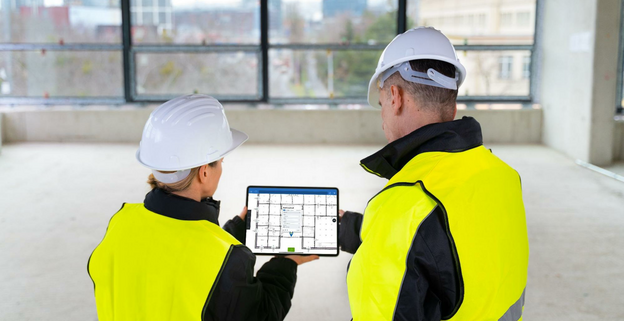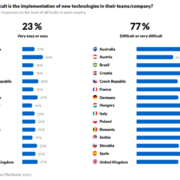Cementing a Safer Construction Sector in Singapore
Vitaly Berezka, Head of Sales, Central Asia, MENA and APAC, PlanRadar shares how Singapore’s construction industry adopts surveillance tech amid safety concerns, emphasising holistic approaches for improvement.

An escalating emphasis on the safety of construction workers in Singapore has prompted the Singapore Ministry of Manpower (MOM) to launch a new series of measures to reduce workplace deaths and injuries, especially in high-risk sectors. According to the MOM, the rate of major injuries in construction has increased in the first half of 2023 despite a nine-month heightened safety period imposed in September 2022.
As part of the suite of measures coming into effect in June 2024, companies will have to deploy video surveillance systems at construction sites for projects valued at $5 million or more. The video surveillance systems will facilitate 24-7 surveillance, identification of workplace safety and health (WSH) risks, support incident investigations and corrective actions, and help deter unsafe behaviours.
With the industry experiencing record-high growth across multiple sectors, and more requirements being announced in the foreseeable future, these regulations underscore the overall need for a more holistic and conscientious approach to a safer construction environment for the longterm, and with time running out, companies must act fast.
Holistic solutions to safer environments
To ensure a smooth transition, companies need to have a clear and holistic view of each site based on a detailed mapping of construction processes and operations with lessons from past projects. Companies need to switch gears to mitigate risk and prevent unwanted injuries or fatalities before accidents occur.
From the get-go, firms need to identify potential safety hazards and challenges that workers may encounter, and they need to have a comprehensive plan for the logistics of equipment, vehicles or materials and the overall operations of the site. To do so is no mean feat, but it is crucial to every company’s reputation for accident-free, on-time and on-budget delivery.

Leveraging technology for construction safety
Building Information Modeling (BIM) can play a crucial role in identifying and reducing risk in construction safety by providing a comprehensive and visual representation of the entire construction project. When used for safety analysis and risk assessment, data on safety regulations, guidelines, and best practices can be integrated for compliance. This also helps in identifying high-risk areas and ensuring that safety measures are integrated into the design and construction phases, including where and how to install video surveillance systems.
Being able to visualise the entire construction process in a digital environment before actual construction begins helps to identify high-risk areas that might not be immediately apparent in traditional 2D plans. An example would be clash detection, which helps to identify conflicts or collisions between different building elements such as structural elements, and mechanical, electrical and plumbing (MEP) systems, among other components. Resolving clashes in the virtual model helps prevent physical clashes on the construction site that could pose safety risks.
Investing in BIM technology could also achieve greater accuracy, empowering site management with valuable simulations in planning site logistics and construction sequencing. By simulating the construction process, including the movement of equipment and materials, potential bottlenecks and safety concerns can be identified and addressed in advance. The creation of virtual mock-ups and simulations, where different construction scenarios can be tested for safety ensures that the right measures are integrated into the construction process.
Post-construction, BIM could also provide a detailed digital model for facility management and maintenance. This includes information on the maintenance requirements of different components, ensuring that safety considerations are maintained throughout the lifecycle of the building. As new technology makes building information analysis easier and more powerful, BIM is likely to become even more relevant to construction site safety and will be a valuable component to the future of Singapore’s construction industry.

Looking ahead: Long-term benefits of compliance
As the construction industry gears up for the six-month countdown, it becomes increasingly urgent to focus on preparation. To effectively prepare for the impending changes, construction firms should conduct comprehensive safety audits, assessing current protocols and practices while identifying areas for improvement.
As part of this preparation, strategies for engaging and educating the workforce on the forthcoming safety standards are also crucial. Companies that proactively embrace and integrate high safety standards beyond mere compliance can demonstrate their unwavering commitment to best practices, positioning themselves as leaders in the construction sector.
By prioritising the well-being of workers and cultivating a safer and more secure working environment, they establish a foundation for long-term sustainability and competitiveness.
About Vitaly Berezka

Vitaly Berezka is Head of Sales across Central Asia, MENA and APAC for the construction and real estate software company, PlanRadar. With an engineering degree in construction, Vitaly also holds an executive degree in business administration. His experience in the real estate development and construction industry spans more than 15 years. Since 2013, he has held management positions in international companies that provide innovative solutions to the construction and real estate industries. Besides lecturing on digitalisation topics at universities, he is the author of scientific publications and the co-author of three books. Vitaly is a member of the International Real Estate Federation (FIABCI).





